From February 13 to 24, 2011, I held my fourth Winter Wonderland Workshop, and after shooting the Snow Monkeys in Nagano for three days, which we looked at in Episode 279, we jumped onto a plane and made our way up to the northern island of Japan, Hokkaido. We were joined by our fourteenth participant up there, and we embarked on the Hokkaido leg of our tour for a further nine days, photographing the amazing wildlife around Eastern Hokkaido.
After we’d finished photographing the adorable Snow Monkeys in Nagano at lunchtime on February the 15th, we got on the bus, and made our way to a hotel near the Haneda Airport in Tokyo. This was different from last year, where I gave the participants a weekend in Tokyo to catch their breath and do some sightseeing. This went down well with some people, but not so well with others, so I got rid of that break. Now, we go to the airport together, and after a night in a hotel, we jumped on a plane to Hokkaido early the following morning. This got us into Kushiro Airport shortly after 9AM, and on the snow, photographing the beautiful and majestic Red-Crowned Cranes by 10AM.
Although the cranes are amazing, and get everyones’ shutter fingers working overtime straight away, one of the highlights of the day at the Akan International Crane Center, is when they throw fish out onto the snow to feed the cranes. It’s not just the cranes that make this interesting though. There are White-Tailed Eagles, Black Kites and the occasional Steller’s Sea Eagle that come in and swoop down to steal the fish before the cranes can snap them up. There is sometimes a little friction between the cranes and the bandit eagles too, which all makes for some great photo opportunities.
Here’s my best shot from this part of the first day (below). This is a juvenile Steller’s Sea Eagle snatching one of the fish from the snow. I shot this with the 600mm lens on the Canon EOS 1D Mark IV, which has a 1.3X crop factor, giving me an effective focal length of 780mm. I was really set up to shoot the eagles from the side as they swooped down, so I ended up cropping the wing tips off of my eagle. From this year we have also started to incorporate structured critique sessions at some of the hotels we stay at, and later in the tour I showed this image to the group un-cropped, saying that I wasn’t happy with it. One of the group then suggested that I crop the image even further, to take away the look of it being accidentally clipped, and it really worked. It enables us to focus even more on the action of the fish being snatched from the snow, which is great. This is a great example of how the sessions helped to increase the productivity of the tour, even for me.
I was also surprised that I managed to nail the focus on this shot too, as I really did snatch at it. I saw the eagle swooping, and literally focused and snatched this shot in a split second, so I’m very pleased that it worked out.
There was another reason why I was very happy on this first day, in addition to the fact that I was in Hokkaido with a great group of photographers, and that is that I was able to meet one of my photography heroes. Art Wolfe was at the Crane Center with his own group, and I couldn’t resist introducing myself, telling him how much I admire him and his work, and getting someone to take this photo of us together, with my iPhone. 🙂
It wasn’t all good news though. There have been a few changes at the Akan Crane Center, which is where we spend the main part of the day for the first few days. There used to be a line of dark pine trees across the entire back of the area where the cranes are, which made a nice contrast against the white cranes, especially as they flew in, but also as they jump into the air when dancing or calling. It turns out that the deer in the area had eaten the bark off the trees and they got ill, and all but five had to be cut down. Now, the background is a smattering of snow interspersed with brown grasses and bear soil, and I have to say, it looks horrible.
For the participants for whom it was the first time, they still totally enjoyed it, and were shooting like crazy for the whole day on the first two days that we spent at the center. I though, know that this location can offer so much more, and so I was a little disappointed. I actually shot a lot less images in the first few days than I usually do, because it just wasn’t that great. What we really needed was some fresh snow to cover the dirt showing through in the background, but it didn’t happen during the first two days that we were scheduled to be here. During the night of the second day though, the forecast was for snow, so when we woke on the third day to find that we’d not only had a lot of fresh snow, but it was still snowing, so I changed the schedule to take us back to the Akan Crane Center for the morning of this third day, and this was a jackpot decision.
As if we’d ordered it, almost as soon as we had gotten into the Crane Center and set up our cameras, a pair of cranes started to dance in the snow, and they danced for longer than I’ve ever seen them do so. The sound of the camera shutters was incredible as everyone captured the scene as it unfolded. Here’s one of my favorite images from this particular session.
I love the fact that the snow has registered so well on the image, and the background was pale, and there’d been enough snow to hide the patches of dirt that would still have ruined this otherwise. I also love this pose, with the way the two cranes necks intersect, and their wings fill the frame. I was using an aperture of F8, as I’ve learned that a wider aperture doesn’t enable you to get two cranes, even dancing this closely, in focus at the same time. This required that I shot with ISO 400 and a shutter speed of 320th of a second, for this exposure. That’s fast enough to freeze the action as the cranes danced around.
Here’s another favorite from this third morning. This is of course a single frame, but the position of the two parents and juvenile crane as they come in to land looks almost like a multiple exposure of a single crane landing. Pushing the post processing boat out a little here, I also used Photoshop’s context aware fill to remove a fourth crane from the left of the scene. It was just too good to throw out.
The same sentiment led me to context aware fill out a large crane shaped steel plate at the edge of the center from this shot too. I’d slowed down the shutter speed on my second camera to 1/40th of a second with an aperture of F16, to get some panning shots with wing movement, and the best shot of this series, with the tree coming into the frame to the right here, had a horrible ornament smack in the middle, and again, I just couldn’t throw this out, so I used my artistic license once again. Please forgive me traditionalists, for I have sinned.
To avoid us going too far off schedule, we didn’t stay for the feeding on the third day. We left at lunch time for Sunayu, which is a place at Kussharo Lake where there would be Whooper Swans. Graham Morgan, our friend from Australia, an amazing photographer and third time participant on this tour had told me that he wanted to find a tree at the Kussharo Lake that Michael Kenna had shot a few times, and pretty much made famous. I didn’t know where the tree was, but I knew from the title of the Kenna photograph roughly where it should be, and so I kept my eyes peeled as we drove towards Sunaya, and sure enough, shortly before we arrived, there was what I thought was the tree, and we can see it here in this next shot.
It was just a short walk along the bank of the lake from where we’d photograph the swans for the afternoon, so I called for those of the group that were interested, and we took a walk down there. After we’d been photographing for a while, a Japanese man who I initially didn’t recognize walked up to me and asked if I was Martin Bailey. I had one of those surreal, “Oh my god, I’m getting famous!” moments, and then he told me his name, and that he’d come to my Exhibition in Tokyo last December. Then, I was able to see past the beany hat and cold weather clothing to realize that I did recognize him, and apologized for not knowing straight away. He was here with Japanese photographer Michiko Yone, who is one of the best Japanese nature photographers in my opinion, though I didn’t realize this until the following morning when we met them again at Bihoro Pass.
The only disappointing thing about meeting this gentleman was that he told me that this was not actually Kenna’s tree. That had fallen ill and been cut down a couple of years ago. This tree was an imposter, but it would do. I don’t like the fact that the bottom bow has been cut off though, which is much more prominent in this second shot. As the swans were flying by relatively regularly though, we decided to hang around and get a couple of shots like this, with them visible flying across the lake, under the tree in the distance. The rocks on the lakeshore here add a nice additional element, and overall, I think the shot has the appeal of a traditional Japanese painting, but I really don’t like that sawn-off branch on the imposter Kenna tree.
As Graham and I walked back to the main group, who’d pretty much all gone back up to photograph the swans by now, I saw and grabbed the next shot, which Graham was not happy about. Graham really is an amazing photographer, so it always makes me happy to see and capture something that his amazing eyes didn’t see, and this was one of those occasions. There was just something about the light on the swans, their attention to something off-frame, and the trees in the top right to balance the whole thing out. The moment was gone quickly though, and I was duly cussed for capturing this one, when I showed it Graham on my LCD. This is all in good fun of course.
Once back with the Whooper Swans, we worked on our panning techniques, which is one of the main educational aspects that I work with the group on at this location. The swans fly in and out with some regularity, and for the first time for me at this location, the person that are responsible for feeding the swans fed walked down to where the swans were not, making them fly down to them in front of us, then when they’d all flown down to one spot, the feeder guy ran back to the other end of the part of the beach where the lake was not frozen to feed the swans again, which of course made them all fly back. This gives us a whole lot of flying swans to practice on.
On the morning of the fourth day, which was the second day at Kussharo Lake with the Whooper Swans, we first got up early and went to the Bihoro Pass, in the hope of a spectacular sunrise. Unfortunately, although it was clear when we left the hotel, it was cloudy and snowing as we got to the pass, and it didn’t clear. We waited as the time for sunrise came and went, we couldn’t see the sunrise or Kussharo Lake, which we were in position to overlook. One of the most frustrating things for me as the organizer of the tour, is that we can’t control the weather and sometimes we have to give up on some of the possible photo opportunities. Luckily, my participants understand, and because we generally do alright, and they tend to forgive me.
As I mentioned earlier though, on the way down from Bihoro Pass, I noticed the group that we’d run into the previous day at Kussharo Lake, and it was then that I recognized their Sensei, as Michiko Yone, one of my favorite and by far one of the most successful nature photographers in Japan. As with Art Wolfe, I couldn’t help but introduce myself, and have a quick chat. It’s really nice to meet one’s heroes. Especially when it’s the second hero in just a few days!
After breakfast we had a critique session at the hotel. We loaned the bar, and I set up the projector that I’d bought mainly for this purpose, and we had a great couple of hours looking at each others images, that the group had saved to Martin Bailey Photography branded USB memory sticks, that I’d provided them each with for this purpose. Everyone agreed that it was a very educational experience, as well as being very inspirational, to see how the rest of the group was seeing and capturing the scenes we were being presented with.
In the afternoon we went back to the Whooper Swans, and continued to work on our panning techniques. It was on this second afternoon that I shot this, probably my most successful images of the swans in flight for this tour.
I’d selected an aperture of F14, to get a slowish shutter speed of 1/60th of a second, which would make the background blur slightly as I panned with the swans. It also helps to get two swans a couple of meters apart both in focus as they fly past, like this, and it helps me to record a bit of movement in the swan’s wings as they flap them. I also show the group my stance, with my feet at shoulder’s width apart, and how I swivel from the waste for a smooth motion. Also, possibly the most important part of panning shots is to follow through, like a golf swing, rather than snatching at the shot, then stopping your pan. That almost always reduces the number of successful images from your burst. You have to keep shooting as you pan, even after you think the moment could be over.
To give us more chance of perfecting our technique among other things, you’ve probably noticed that a major change that I made to the tour this year is that we spent two days at almost all of the locations we visited. I find this really helps people to maximize their chances of getting some great images at each location. On the first day, you are mostly getting used to the situation and location, and the subject matter. I’m sure you’ve been somewhere for a day in the past, and then get home at night and look at your images and wish you’d done something differently. If you go back the very next day, it allows you to fix all those things, and act on what you’ve learned straight away, not the following year or so if you manage to make it back to the same location. If it’s a year or so before you go back, you almost inevitably make the same mistakes again on the first day.
On the fifth morning, we had hoped to have a second chance at Bihoro Pass, but the heavy snow had resulted in the road being closed off. There was a slim chance of it opening early enough for us to still make it up there, but after much deliberation we decided that Yukiko, the guide that was traveling with us from the Tour Operator that I teamed up with from this year, would get up at 3:50AM and call the authorities that would be able to tell us if the road was open or not. If the road was open, she would give us all a morning call. If it was not, we’d all stay in bed until breakfast. It turns out that the road didn’t open until around 7:30AM, and we all had a lie-in, except for Yukiko of course, bless her.
It really did make a huge different having Yukiko around this year. The check-in to the hotels all went very smoothly, as did lunches and figuring out who owed what for their drinks with the evening meals. These things were all very much appreciate by the group. Especially those that have joined in past years, because they know that me trying to deal with all of this things as we came to them took a lot of time and effort in the past. Another great side-effect that I’d been hoping for is that with me freed from all of these logistic tasks, I was able to stay fresh for the group, making it an overall richer experience for them too. I’m certainly going to continue to work with this tour operator for future years too, so if you should join us, you’ll reap these benefits as well. For now though, I’d like to say a huge thanks for all that you did for us Yukiko, if you’re listening. The group and I all really appreciated your help.
We spent the morning of the 20th driving over to Rausu, the harbor town where we would be shooting the Steller’s Sea Eagles and White Tailed eagles from a chartered boat. In the afternoon for a while we shot around the harbor, and then made our way to the boarding house where we were planning to photograph Blakiston’s Fish Owls in the evening. The next few hours were incredibly frustrating for me. The owner of the boarding house was not there when we arrived, but a number of other photographers were, which was a problem, as we had been told that we were fully chartering the premises on this day, and no-one else would be there. One guy that was there was a local guide that I know well, and although he knew that we were supposed to be coming, he didn’t know that we were supposed to be the only group there. He agreed that we had a problem, but couldn’t do any more than turn other people that turned up away.
Eventually the owner of the facility turned up, and after my flurry of frustrated complaints, tried to tell the other photographers that had by now set up their equipment that they had to leave. This put me in a difficult position. As we had now found a spot for each of my participants, and if we borrowed the owners car for the last two of us to shoot from, we could manage without turning the other photographers away, so I allowed them to stay. One of them came straight over and shook my hand and thanked me. Another opened a can of beer and got back into his car. Later in the evening he’d annoy me further and we exchanged strong words, but that was about the extent of my frustration once we’d gotten things sorted out.
I got angry though, and was frustrated with myself for showing my group a side of me that I’d rather have not. I still regret this, but it really was a frustrating experience, and I’m still considering whether or not I should leave this out of the 2012 itinerary. By the way, the Owls did show a couple of times, and we were able to get shots like this one, as the owls came down to catch the fish that were put into the pool in the river for them to take. I know that some people don’t like this sort of bating, but the truth is, in these owls case, that this activity has enabled the owls to grow in number for the first time in decades, so I’m kind of OK with it all.
Note that I cranked my 1D Mark IV up to ISO 6400 for this shot, to get a shutter speed of 1/500th of a second with an aperture of F4.5. You need a 500th of a second to freeze a bird in flight, but the constant lighting that they have on these owls isn’t all that bright. Thank heavens for the low noise at high ISO that modern DSLRs afford us.
This brings us to the end of the fifth day in Hokkaido, and to the end of this episode. Join me in the next episode to see how our last four days went.
Podcast show-notes:
Future Workshop Info: http://www.mbpworkshops.com/
Music from Music Alley: http://www.musicalley.com/
Subscribe in iTunes for Enhanced Podcasts delivered automatically to your computer.
Download this Podcast in MP3 format (Audio Only).
Download this Podcast in Enhanced Podcast M4A format. This requires Apple iTunes or Quicktime to view/listen.

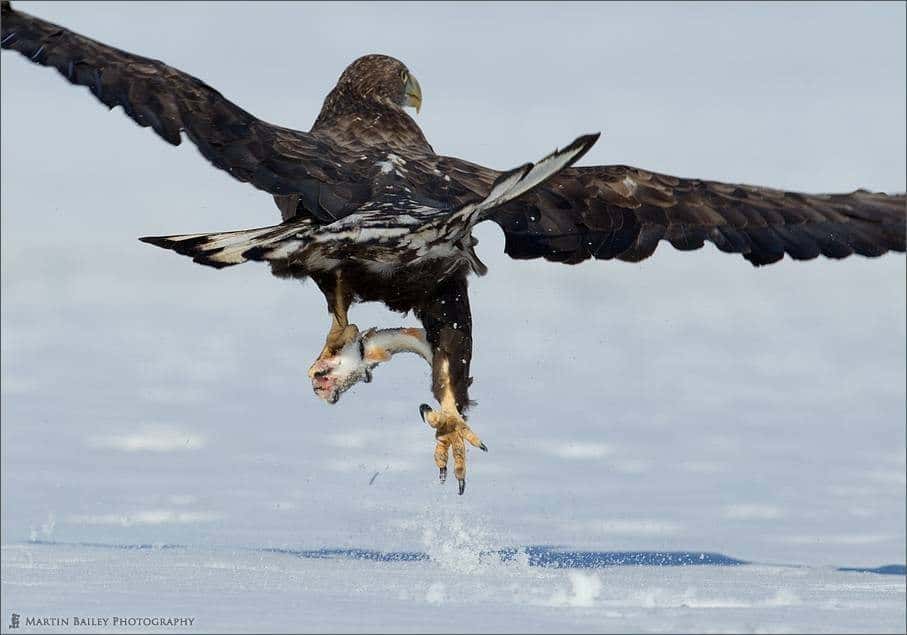
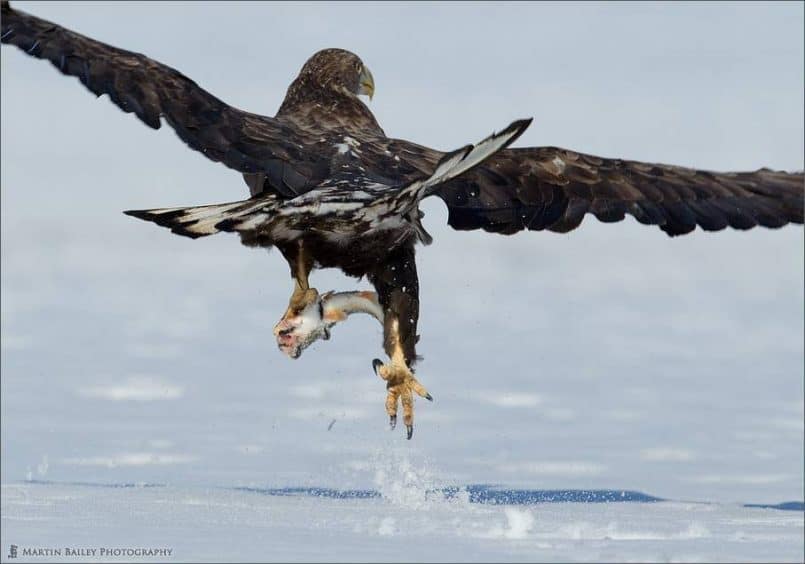
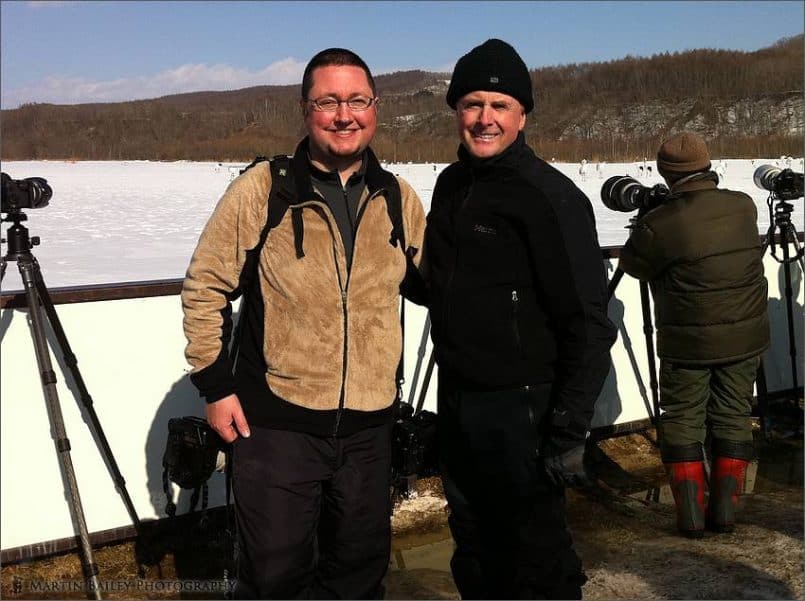

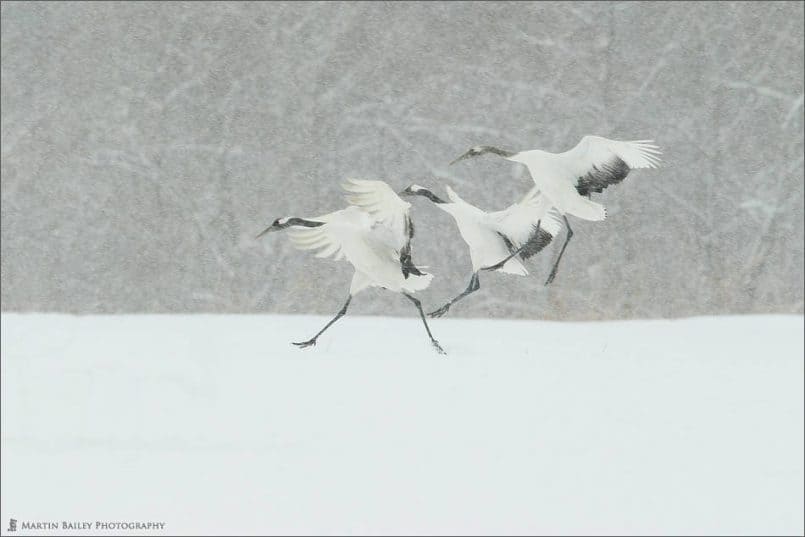
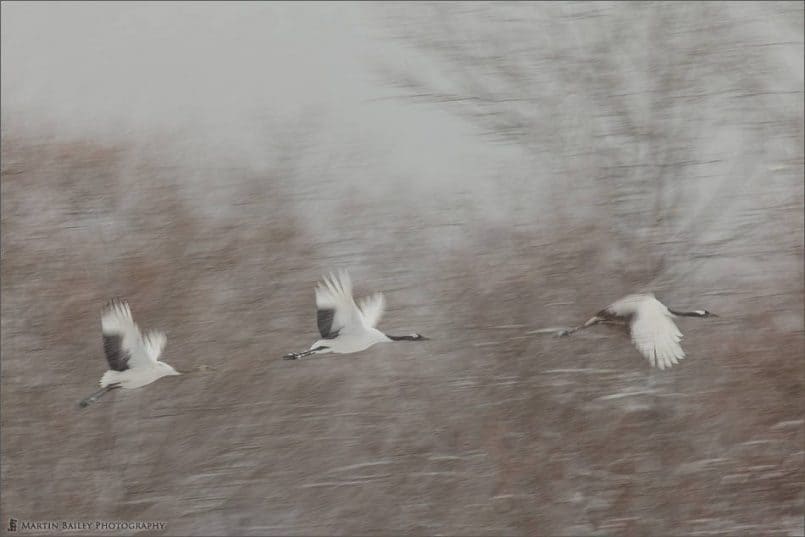
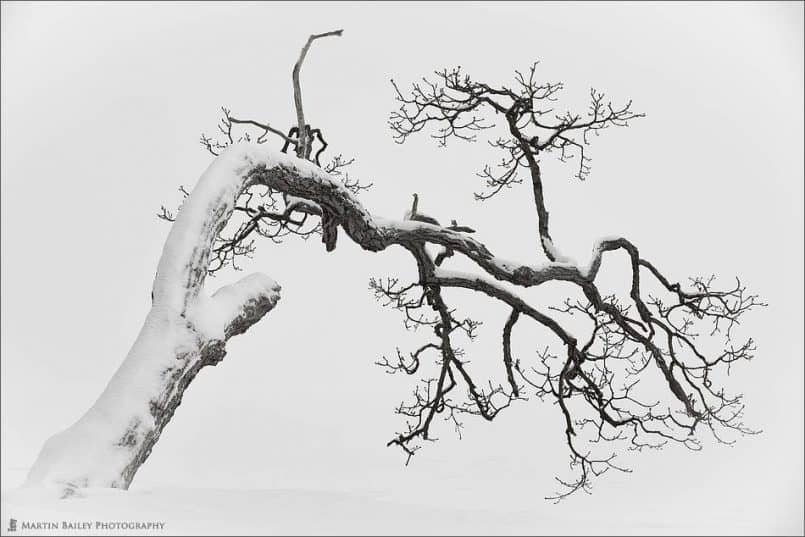
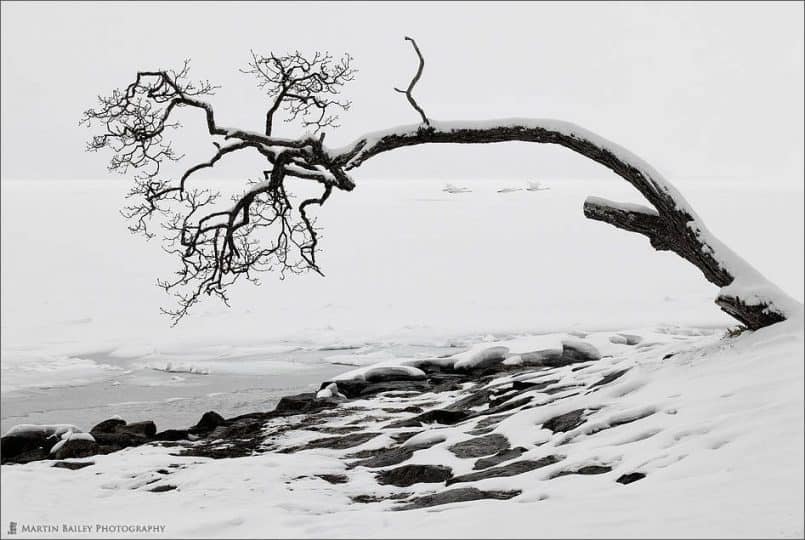
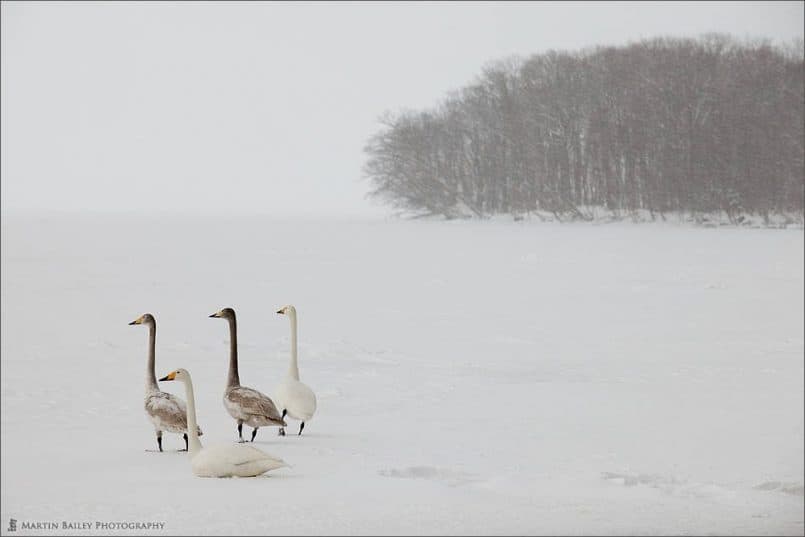
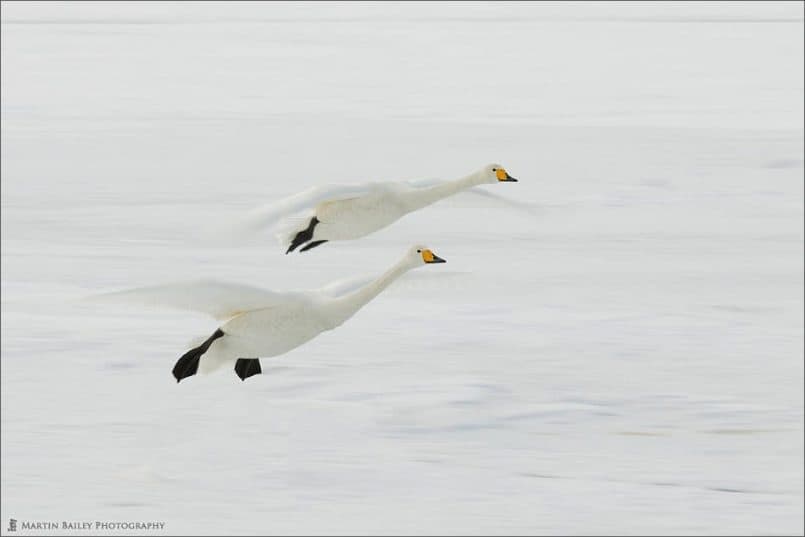
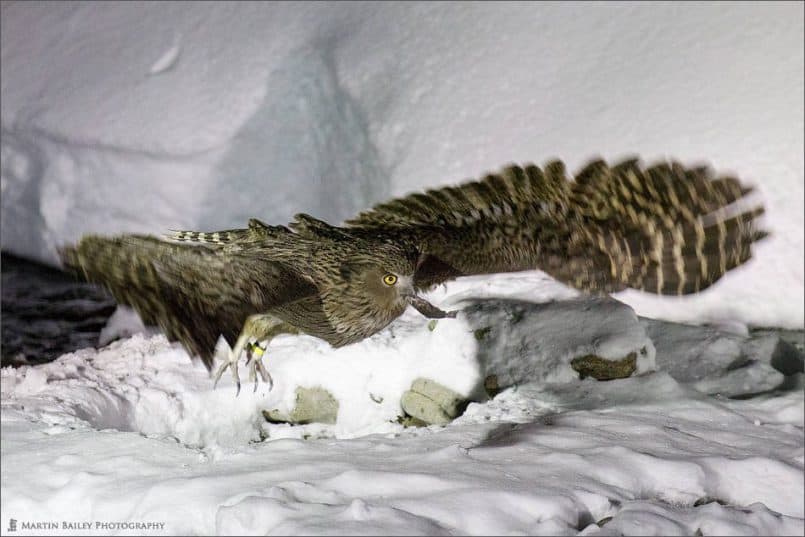

Hi Martin,
I live in Florida USA.
I like you Podcast loved and you photos are very well finish.
I hope you are OK with Japan Earthquakes and no problems for you.
Thanks Martin.
Alex
Hi Alex,
I’m fine thanks, though some of our family were affected. Things are slowly getting back to normal though.
Thanks for listening to the Podcast too, and I’m pleased you like my photos.
Cheers,
Martin.